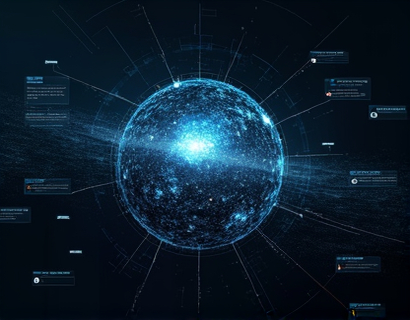Effortless Business Optimization: A Cutting-Edge Solution for Streamlining Operations Across Industries
In the fast-paced and ever-evolving business landscape, organizations across various industries face numerous challenges that can hinder their growth and efficiency. From managing complex workflows to optimizing resource allocation, the need for a robust and adaptable management solution is paramount. This article delves into the intricacies of a cutting-edge management software, expertly designed to streamline operations and boost productivity, thereby helping businesses achieve seamless efficiency and sustained success.
The modern business environment is characterized by rapid changes, increased competition, and the constant need for innovation. To stay ahead, companies must leverage advanced tools and technologies that can adapt to their unique requirements and streamline their operations. A comprehensive management software serves as a vital asset in this regard, offering a suite of features that address real-world challenges and enhance overall performance.
Understanding the Core Challenges
Before exploring the benefits of a cutting-edge management solution, it is essential to understand the common challenges businesses face. These challenges can be broadly categorized into operational inefficiencies, communication breakdowns, and resource mismanagement.
Operational inefficiencies often stem from manual processes, redundant tasks, and lack of standardization. These issues not only waste time and resources but also lead to errors and decreased productivity. Communication breakdowns, on the other hand, can result from fragmented systems and siloed departments, leading to misalignment and missed opportunities. Resource mismanagement, including over-allocation or underutilization of assets, further exacerbates these problems, making it crucial for businesses to find a solution that can address these multifaceted challenges.
Key Features of a Cutting-Edge Management Software
A state-of-the-art management software is designed to tackle these challenges head-on, offering a range of features that enhance workflow, improve communication, and optimize resource utilization.
Firstly, automation is a cornerstone of modern management software. By automating repetitive and time-consuming tasks, businesses can free up valuable time for their employees to focus on higher-value activities. Automation can range from scheduling and reporting to data entry and inventory management, ensuring that processes are consistent and error-free.
Secondly, real-time data analytics is crucial for making informed decisions. Advanced dashboards and reporting tools provide insights into key performance indicators, allowing managers to identify trends, spot bottlenecks, and take proactive measures. This data-driven approach ensures that businesses can respond quickly to changes in the market and adapt their strategies accordingly.
Thirdly, seamless integration with existing systems is essential. A comprehensive management software should be able to integrate with a wide range of tools and platforms, ensuring a smooth transition and minimizing disruptions. This interoperability allows for a unified view of operations, enhancing coordination and collaboration across departments.
Enhancing Workflow Efficiency
One of the most significant benefits of a cutting-edge management software is its ability to streamline workflows. By mapping out processes and identifying inefficiencies, the software can suggest optimizations that reduce cycle times and improve throughput. For instance, workflow automation can eliminate manual approvals and notifications, ensuring that tasks are completed promptly and efficiently.
Moreover, the software can implement best practices and industry standards, ensuring that processes are standardized and consistent. This standardization not only reduces errors but also facilitates knowledge transfer and onboarding of new employees, further enhancing operational efficiency.
Improving Communication and Collaboration
Effective communication is the lifeblood of any organization. A modern management software fosters better communication by providing a centralized platform where team members can collaborate, share information, and track progress in real-time. This centralization eliminates the need for multiple communication channels and ensures that everyone is on the same page.
Features such as task assignment, comment threads, and file sharing within the platform promote transparency and accountability. Team members can easily assign tasks, set deadlines, and monitor progress, ensuring that projects stay on track. Additionally, the software can integrate with popular communication tools, allowing for a seamless flow of information across different platforms.
Optimizing Resource Utilization
Efficient resource management is critical for maintaining productivity and controlling costs. A sophisticated management software provides tools to optimize the allocation and utilization of resources, whether they are human, financial, or material.
For example, the software can perform capacity planning to ensure that resources are used optimally, avoiding over-allocation during peak periods and underutilization during slow times. It can also provide predictive analytics to forecast resource needs based on historical data and trends, enabling proactive planning and better decision-making.
Furthermore, the software can help in cost management by tracking expenses, generating budgets, and identifying areas for cost reduction. This financial oversight ensures that resources are used efficiently, contributing to the overall financial health of the organization.
Case Studies and Real-World Applications
To illustrate the practical benefits of a cutting-edge management software, let's consider a few real-world applications across different industries.
In the manufacturing sector, a large production company implemented the software to streamline its supply chain and production processes. By automating inventory management and production scheduling, the company reduced lead times by 30% and minimized stockouts. The real-time data analytics provided valuable insights into production bottlenecks, allowing the company to make timely adjustments and improve overall efficiency.
In the healthcare industry, a hospital network adopted the software to enhance patient care and operational efficiency. The centralized platform enabled seamless communication between departments, reducing patient wait times and improving service delivery. The software's reporting tools helped in monitoring key performance metrics, such as patient satisfaction and staff utilization, leading to continuous improvement in service quality.
In the retail sector, a chain of stores used the management software to optimize their point-of-sale (POS) systems and inventory management. Automation of routine tasks like stock updates and sales reporting saved valuable time for staff, allowing them to focus on customer service. The integrated analytics provided insights into sales trends and customer preferences, enabling targeted marketing and inventory adjustments.
Benefits Across Industries
The benefits of a cutting-edge management software are not limited to specific industries but are applicable across a wide range of sectors. Here are some of the key advantages:
- Increased Productivity: By automating repetitive tasks and streamlining workflows, businesses can significantly boost productivity, allowing employees to focus on strategic initiatives.
- Enhanced Decision-Making: Real-time data analytics and comprehensive reporting tools provide actionable insights, enabling data-driven decision-making and better strategic planning.
- Improved Collaboration: Centralized communication and collaboration features foster a more cohesive work environment, reducing misunderstandings and improving team performance.
- Optimized Resource Utilization: Advanced resource management tools ensure that resources are used efficiently, reducing waste and lowering costs.
- Scalability: The software is designed to grow with the business, supporting expansion and adaptation to new challenges without compromising performance.
Implementing a Cutting-Edge Management Solution
Implementing a cutting-edge management software requires a strategic approach to ensure successful adoption and maximum benefits. Here are some steps to consider:
First, conduct a thorough assessment of your current processes and identify areas for improvement. This analysis will help in selecting a software that aligns with your specific needs and goals.
Next, involve key stakeholders from different departments in the selection and implementation process. Their input is crucial for ensuring that the software meets the diverse requirements of the organization.
During the implementation phase, provide comprehensive training to all users to ensure they are comfortable with the new system. Ongoing support and regular updates are also essential to address any issues and incorporate new features.
Finally, monitor the performance of the software and gather feedback from users to make continuous improvements. This iterative approach ensures that the management solution remains effective and relevant over time.
Conclusion
In today's competitive business environment, the ability to streamline operations and optimize performance is more critical than ever. A cutting-edge management software offers a comprehensive solution to the multifaceted challenges faced by businesses across various industries. By automating processes, enhancing communication, and optimizing resource utilization, this software enables organizations to achieve seamless efficiency and sustained success. Embracing such a solution is not just an option but a necessity for any business aiming to thrive in the modern marketplace.











































